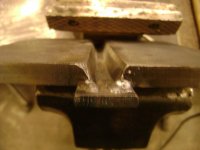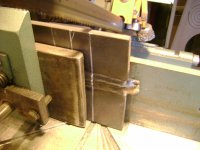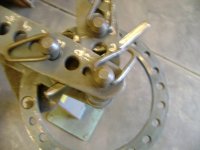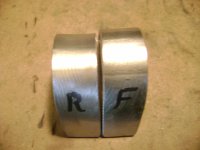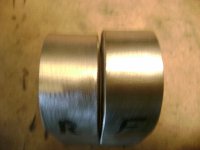ChuckE2009
Silver Member
- Joined
- Jun 4, 2010
- Messages
- 131
Hey yall!!
So, this is what I've been up to lately, I ran some welds with 6011, 6013, 7014, and 7018:

And then hammered them apart:



Which was actually pretty fun and very stress relieving. My weakest weld was 7014, then 6013, 6011, and 7018. It honestly wasn't exactly what I was expecting, but I was really impressed with how the 7018 held up, considering I ran all these with cheap Hobart electrodes and that 7018 had been sitting out since last winter. What I don't fully understand yet, tho, is the huge difference in the performance of the 70XX electrodes, how one failed so soon and the other held up so well. I know that one is low hydgren, but is that all that made the difference? Hopefully someone can shed a little light on that...
But anyway, hope yall enjoy the video I made this after someone asked me about weld strenght with the different electrodes, and I thought back to last summer to a series of posts made by Shield Arc. He's a great welder and did pretty much the same test that I did, so I got his permission to copy his test and made it in video form. Thanks dude
I made this after someone asked me about weld strenght with the different electrodes, and I thought back to last summer to a series of posts made by Shield Arc. He's a great welder and did pretty much the same test that I did, so I got his permission to copy his test and made it in video form. Thanks dude 
[ame=http://www.youtube.com/watch?v=QuFbvSfsMvk]Stick Electrode Smackdown - YouTube[/ame]
So, this is what I've been up to lately, I ran some welds with 6011, 6013, 7014, and 7018:

And then hammered them apart:



Which was actually pretty fun and very stress relieving. My weakest weld was 7014, then 6013, 6011, and 7018. It honestly wasn't exactly what I was expecting, but I was really impressed with how the 7018 held up, considering I ran all these with cheap Hobart electrodes and that 7018 had been sitting out since last winter. What I don't fully understand yet, tho, is the huge difference in the performance of the 70XX electrodes, how one failed so soon and the other held up so well. I know that one is low hydgren, but is that all that made the difference? Hopefully someone can shed a little light on that...
But anyway, hope yall enjoy the video
[ame=http://www.youtube.com/watch?v=QuFbvSfsMvk]Stick Electrode Smackdown - YouTube[/ame]

